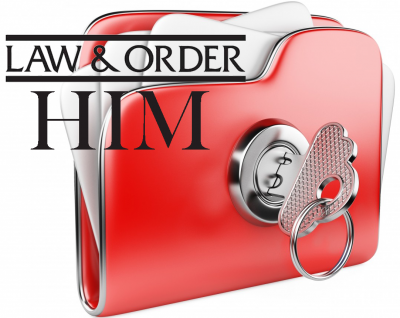Law and Order: HIM
 The ownership of the medical record is often in dispute, but why?
The ownership of the medical record is often in dispute, but why?
To better understand this ownership, we need to look more in-depth at what a medical record, or medical chart, really is.
Creating a Medical Record
The health care facility uses its resources to prepare the medical chart beginning with the patient's first visit. This process includes the doctor who dictates the chart, the office personnel who manage the chart, and the costs associated with storing the chart.
Why do so much time and effort go into creating, protecting, and releasing a medical chart? A medical chart is full of valuable information, including basic demographics, family history, test results, diagnosis, treatments, surgeries, illnesses, medications, and any additional notes the doctor makes regarding the visit. These aspects come together to create a patient's complete medical history.
Maintaining the Chart
The provider is also responsible for maintaining the chart and all information that is included. This means that the provider must abide by laws and regulations pertaining to medical records, most importantly HIPAA.
HIPAA requires a health care facility to retain medical records for a minimum of 6 years, while most state laws require additional years of retention. The provider solely takes on all costs to maintain and store the records for 6+ years.
It is also important to note that a medical record is a legal document and can be used as medical evidence in the court of law. All medical records are subject to a subpoena duces tecum (or subpoena for production of evidence), meaning the provider’s documentation are subject to legal review. This places a great deal of responsibility on the provider to make sure every important detail is included in the medical chart.
Reproducing a Copy
Why is this debate over ownership such a common issue? It is most often brought up when a patient is required to pay for a copy of their medical records and they do not understand why. Though the information belongs to the patient, the physical medical chart belongs to the provider.
Because the provider uses its resources to create and reproduce a copy of the patient's medical chart, HIPAA allows the provider to charge a set amount to any requesting party. If a patient is requesting a copy of their medical records for personal use, the provider is able to charge a reasonable fee to compensate for any costs associated with reproducing these records.
Providers have come a long way in supporting patient engagement by providing portal access through EMR systems. An EMR, or electronic medical record, allows patients to review their information online at any time without a charge. However, the information provided to patients through the portal is often limited and may not include all of the necessary medical records. At this time patients may elect to purchase additional information and have it sent to themselves or a representative.
Based on all of this information, we can see more clearly what is involved in the health care provider to create, maintain, and reproduce a patient's medical chart.
The management of medical records can be a very large burden for the provider, which is why the majority choose to partner with a Release of Information (ROI) company that can take care of this process for them. Outsourcing these services can be a huge benefit to both the provider and the patient. The patient is able to receive all of the requested records quickly and the provider does not have to worry about the time and resources that it takes to complete the request. This allows the provider to focus on what is most important, patient care.
- Kelley Helton, Director of Accounting
